Structural Optimization Analysis with ANSYS DISCOVERY16 August 2022
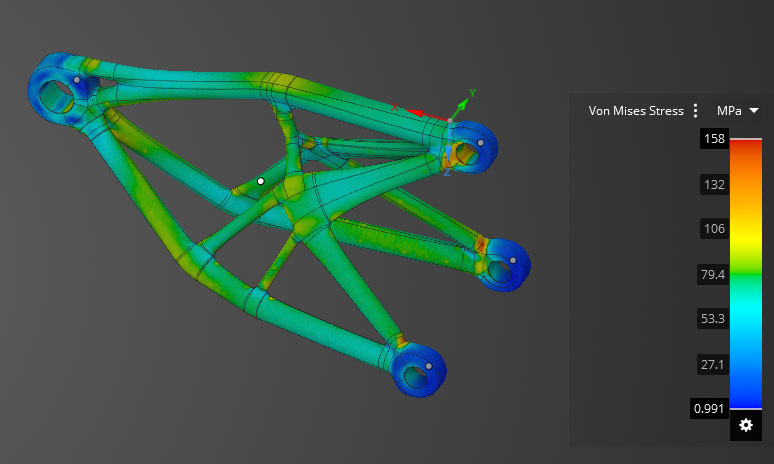
The term structural optimization is commonly used for the optimization of engineering structures for improved strength or stiffness properties and reduced weight or cost.
ANSYS Discovery 2022R1 provides topology optimization with the following options:
- Optimization for Strength or Response to Free Vibration.
- Optimization for a Specified Frequency.
- Optimization to Remove Excess Material.
Topology Optimization using ANSYS Discovery 2022R1
ANSYS Discovery is often used as a first approach for any topology optimization, due to its fast results. We can use any big raw material piece to obtain a preliminary shape for the component we want to design. It is recommended to check the design with ANSYS Mechanical and to perform afterwards a fine tuning with shape optimization.
In this example we are presenting how to obtain a complex shape from a big block of raw material. We have to connect three hinges with a bearing location. In the picture below the block with the applied boundary conditions is presented.

The material is cast aluminum alloy. The load case is ultimate, so the yield stress (165 MPa) can be allowed to be reached only for very small areas.
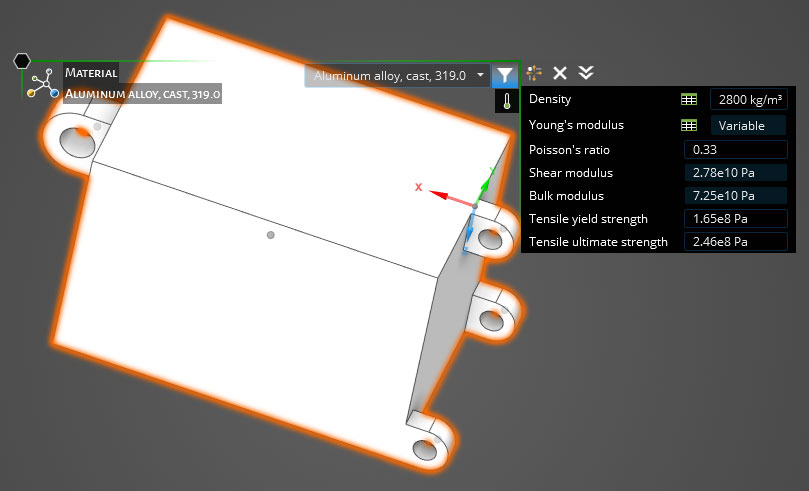
We notice, when having the results of a static analysis, that the maximum Von Mises stress is 128 MPa in the area of the upper hinge and that the rest of the material is very low stressed.
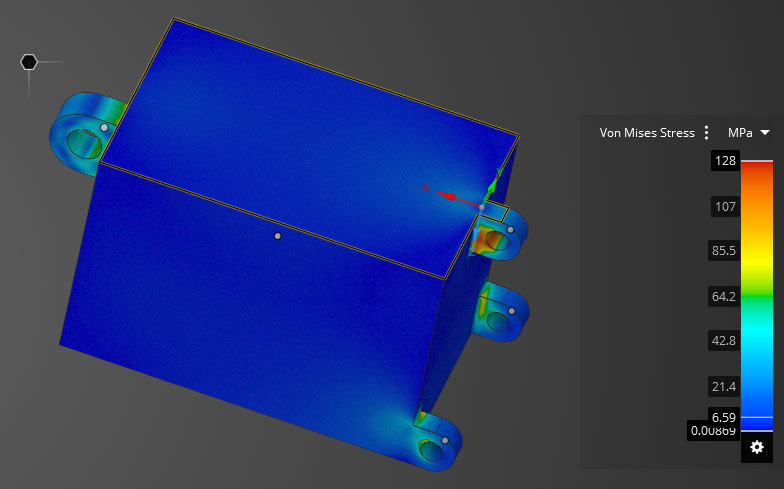
Then, we are adding the topology optimization option. We request ANSYS Discovery to perform a reduction of the volume by 95%. Two separate analyses are performed:
a) Volume reduction with maximization of the stiffness;
b) Volume reduction with removal of excess material (minimizes compliance).
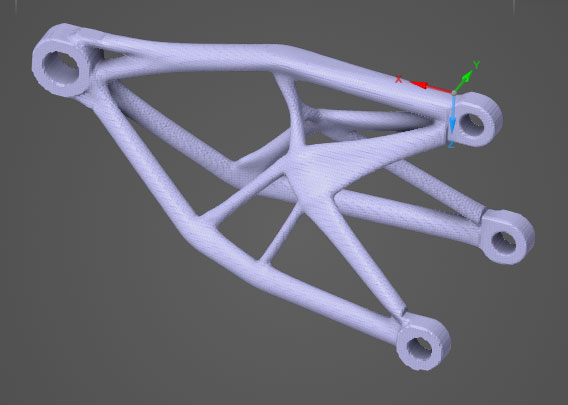
We have above the obtained shape for point a) case. The volume is reduced by 95%.
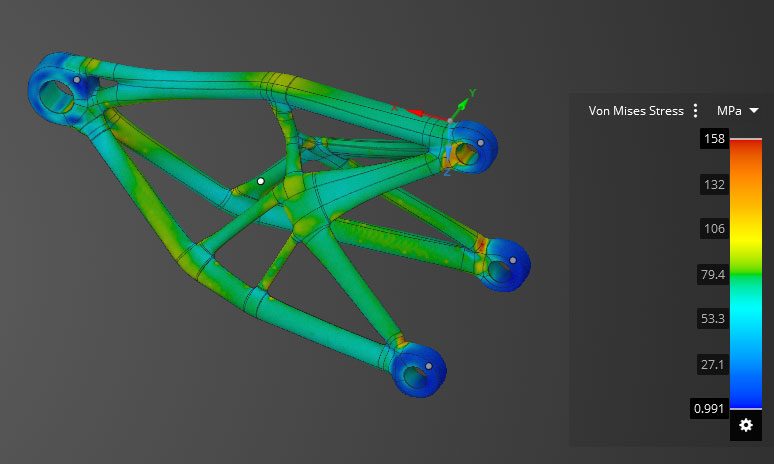
The validation simulation shows a maximum Von Mises stress of 158 MPa.
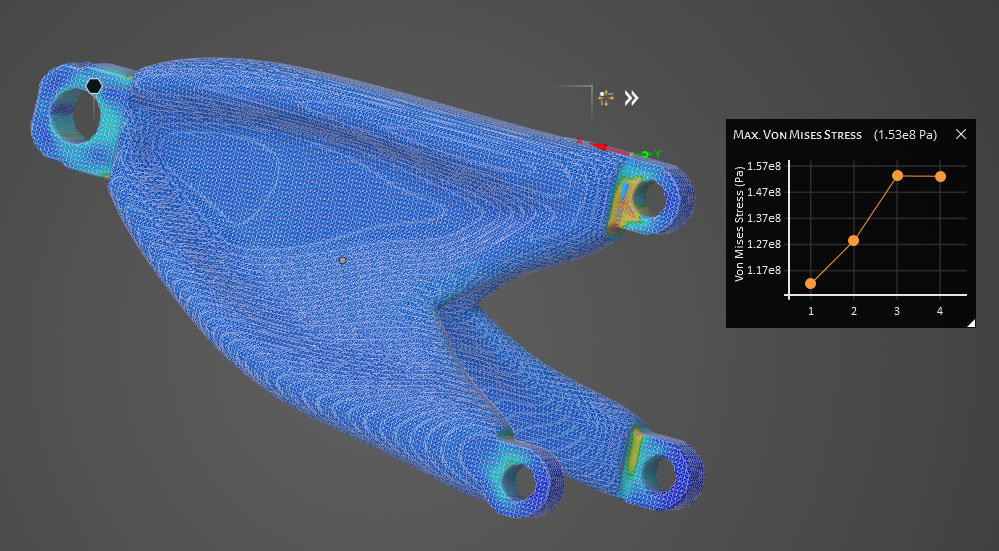
We can see above the obtained shape for point b) case. The software managed to reduce the volume by 85% with this method. The maximum stress is 153 MPa.
Then we can check the final shape using ANSYS Mechanical. We performed this check only for point a) case. Please notice that the structure is not symmetrical even if the load is symmetric. So, we cut the structure in two halfs, delete one and mirror the other. We choose the half which is more easier to cast, for the piece manufacturing.
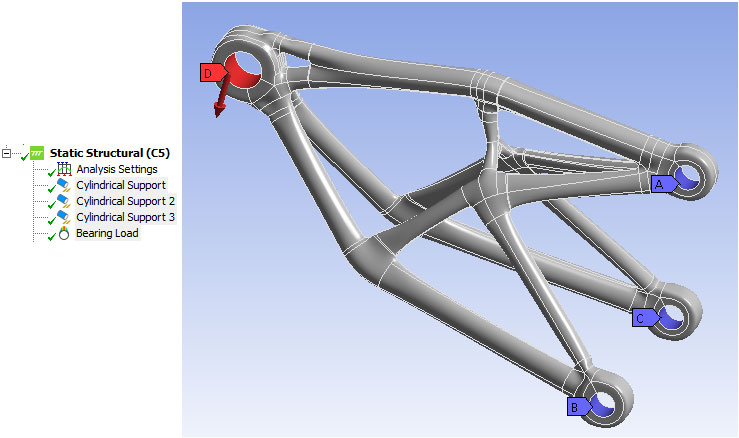
The performed stress checking reveals that the Von Mises stress is a little bit higher than the yield limit.
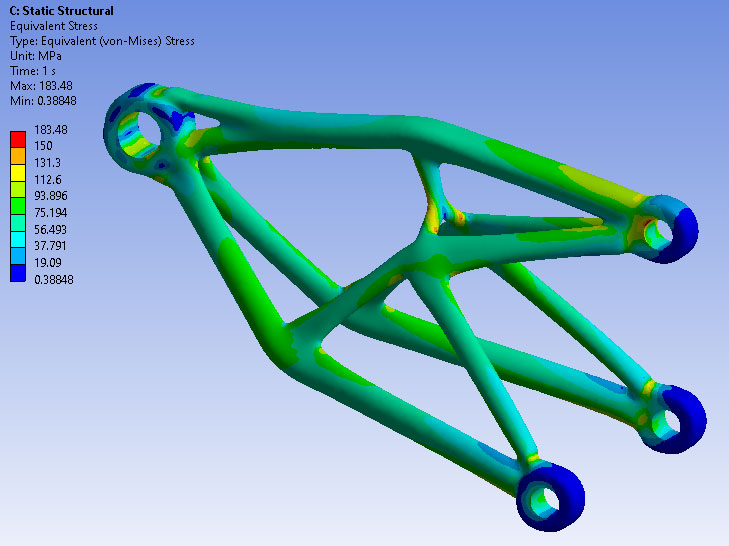
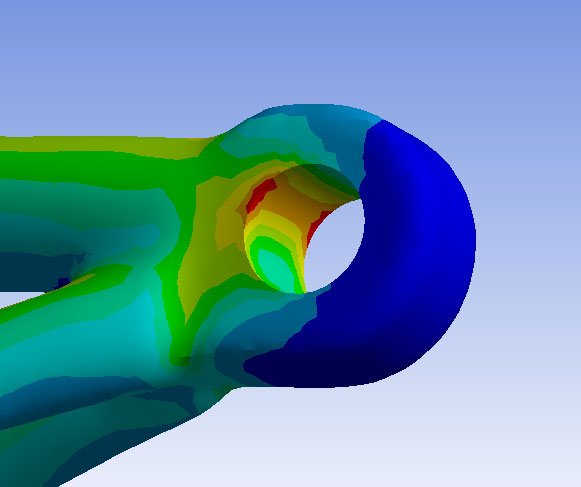
The areas where the yield limit is exceeded are very small and they are located on the upper hinge. In the most cases, such a situation is acceptable. If this cannot be accepted than the designer can increase the protected areas or reduce the imposed reduction of volume.
Conclusions
- ANSYS provides very strong tools to perform structural optimization;
- Even with limited simulation capabilities, ANSYS Discovery can be used as a very fast start for topology optimization, allowing fast analyses of several cases;
- The resulted geometry provided by ANSYS Discovery can be fine-tuned with ANSYS Mechanical using shape optimization (mesh morphing) to have the best design for a certain set of imposed conditions.




